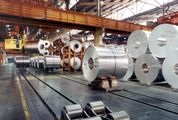NEIL Atkinson is head of the oil industry and markets division at the International Energy Agency.
BUSINESS DAY TV: After fizzling out earlier this week, oil is on the rise again boosted by a statement from Qatar that ministers from 15 Opec (Organisation of the Petroleum Exporting Countries) and nonOpec countries are in favour of joining talks in Qatar next month aimed at an output freeze. Today’s move forward is a report from the International Energy Agency (IEA) last week, which suggested prices may have bottomed. Neil Atkinson, head of the IEA’s oil industry and markets division joins us on the line with more.
Neil...I suppose we saw that oil price pull back a bit on Monday and Tuesday, so some volatility still in the market, and I suppose there are a number of factors that play here, not least of all the strength of the dollar?
NEIL ATKINSON: Yes, there is still a lot of volatility out there because the market has so many factors to try and consider in deciding whether, as we suggested in our report, oil prices really have bottomed out. And from here on we’re going to see a gradual improvement.
The strength of the...weakness of the US dollar from various periods of time is a key factor of course, because with the price of oil denominated in dollars, its value clearly has an important impact on oil demand prospects going forward. But I think the issue that you raised at the very beginning here with the prospective talks in Qatar in the next period, which is potentially very interesting.
Although I think we should caution here because an output freeze is not the same thing as an output cut. And an output freeze would merely regularise what is already the situation with many of the countries who are participating in these talks. Many of those countries do not have the ability to increase their production even if they wanted to. So an output freeze only really regularises what their actual production is and therefore its impact on today’s global supply-demand balance for the next few months would not be very great at all.
BDTV: You talk about volatility in the oil price and to a large extent that seems to be sentiment driven more than anything else, so from the start of the year or maybe from midway last year, has anything fundamentally changed in the supply-demand dynamics in the global oil industry?
NA: Not enormously but of course it takes a long time for the industry to fully understand what’s really sitting right in front of it. And, there was the growing realisation as 2015 progressed that far from the market moving to balance in 2015 with supply and demand becoming more closely aligned, if anything the situation was getting worse, because supply was continuing to grow in Opec countries such as Saudi Arabia and Iraq and also very strongly still in the US, even though prices had started falling.
So people realised that the supply surplus was going to be with us for probably another year, i.e. 2016. So the price continued going down and we think it might have bottomed out just below $30 per barrel.
But of course the market is looking forward now and it’s expecting that as 2016 progresses the huge surpluses of supply which are still building up in the first half of this year, that will come to an end and the market will come closer to balance as 2016 progresses.
We’ll move to balance in 2017, at which point stocks will begin to draw and there’ll be some sort of floor under the price and all the volatility, the sentiment driven movements in prices, a lot of that is groping around if you like to try and understand where we’re going in the next year or so. But gradually people are beginning to realise that the worst is probably now behind us and we have to wait and see when the improvement starts and how strong it’s going to be.
BDTV: At the same time where do you see demand going, because you do say in the March reports that the risks to demand growth are to the downside?
NA: Yes that’s if there are going to be changes. The reason we said that is that at the beginning of 2016 we saw a lot of turbulence in financial markets, a lot of turbulence in commodities markets and in other parts of the complex and there was some talk that GDP (gross domestic product) growth estimates might be cut back in various economies.
China received an enormous amount of focus as you would expect because China is an enormous part of the demand for commodities around the world. Its GDP growth is hugely important for the strength of the global economy. So we’re still obviously not entirely clear what the macroeconomic picture is going to look like.
We certainly feel it’s very unlikely that we’re going to be revising economic growth estimates globally at least, upwards, or if we do, it won’t be by very much. The risk is more to the downside. But we don’t want to overplay this, we still have a base case forecast for oil demand growth of approximately 1.2-million barrels per day, which by recent standards is still fairly robust.
BDTV: What are your thoughts on the price action over the last couple of weeks or so? Because there were a few commentators who suggested that to see a bit of an uplift in the price was actually a damaging thing for certain commodity markets which are in oversupply, like oil and like iron ore, and which might encourage suppliers to come back into the market and therefore add to the glut of supply that is in existence. Your thoughts around that? do you think that an increase in the price would actually be a bad thing for the oil market right now?
NA: Well that’s an extremely good point and the debate we’re having here as far as this issue is concerned, centres principally around the US. Now we saw the enormous increase in production from the US starting in about 2008. The speed of the increase took us all by surprise and once prices for oil started to fall back dramatically, the resilience of the US oil industry in the face of lower prices has also taken us largely by surprise.
We did expect production would have fallen more steeply, more quickly, but it hasn’t. However we do expect that production will fall in the US as 2016 progresses.
But here is the key point and this is again one of the unknowns, we didn’t see the increase coming, we didn’t fully appreciate the resilience coming down. When oil prices have definitively bottomed out and do start to improve, how quickly will higher cost producers be able to resume operations that they’ve shut down, or how more quickly will they be able to bring new productions on stream?
Will they be able to bring this production on stream at lower prices than they required five or six years ago when they were bringing it on in the first place? This is a huge area of uncertainty so while I wouldn’t say that rising prices might be a bad thing, what rising prices might do, and we’ll have to wait and see, is encourage precisely the return of production that some people are suggesting.
But in any event what it would do is put a cap on the level of increase in prices rather perhaps than risk another collapse. But of course we’re in new territory to some extent here.























Login OR Join up TO COMMENT